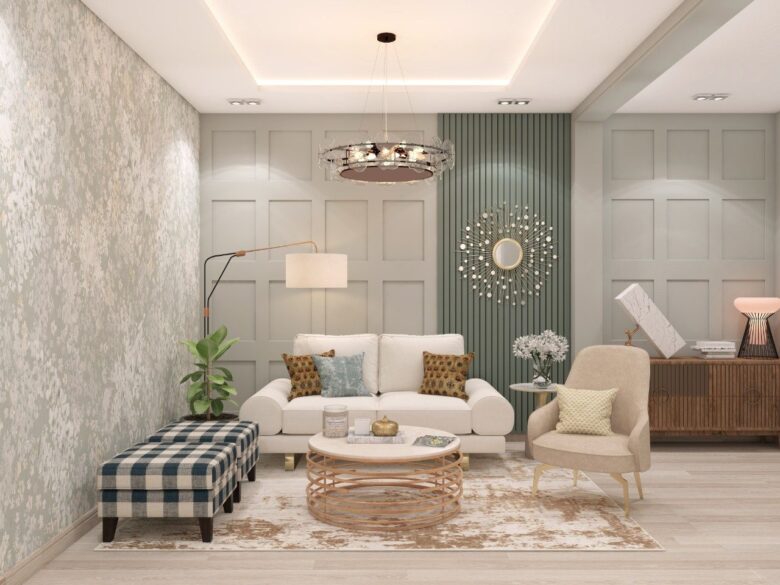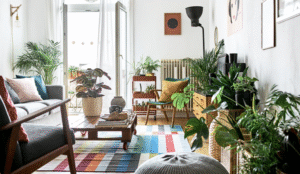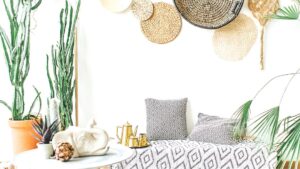Your home should be more than just a place to live—it should be a reflection of your personality and a sanctuary that inspires you daily. Modern home décor trends have evolved beyond fleeting fads to embrace timeless principles that create spaces both beautiful and functional. These contemporary design approaches can transform any room from ordinary to extraordinary, regardless of your budget or square footage.
The best modern décor trends share common themes: they prioritize comfort, sustainability, and personal expression while maintaining clean, sophisticated aesthetics. Whether you’re planning a complete home makeover or simply refreshing a single room, understanding these trends will help you make informed decisions that stand the test of time. Let’s explore eight transformative trends that can instantly elevate your interior design.
Minimalist Elegance: Less is More
Minimalist design remains one of the most impactful trends for creating sophisticated, calming spaces. This approach focuses on clean lines, neutral color palettes, and carefully curated furnishings that serve both form and function. Rather than stark emptiness, modern minimalism embraces warm neutrals, natural textures, and strategic pops of color.
The key to successful minimalist décor lies in choosing quality over quantity. Select furniture with simple, geometric shapes and invest in pieces that will age gracefully. Neutral colors like warm whites, soft grays, and beiges create a cohesive backdrop that allows architectural features and carefully chosen accessories to shine.
Storage becomes crucial in minimalist spaces. Hidden storage solutions maintain clean lines while keeping everyday items organized. Built-in shelving, ottoman storage, and multi-functional furniture pieces help maintain the uncluttered aesthetic that defines this trend.
Biophilic Design: Bringing Nature Indoors
Biophilic design recognizes humans’ innate connection to nature by incorporating natural elements into interior spaces. This trend goes beyond adding houseplants—it includes natural materials, organic shapes, and design elements that mimic patterns found in nature.
Start with live plants of varying sizes and textures. Large floor plants like fiddle leaf figs or monstera deliciosa create dramatic focal points, while smaller plants can be grouped on shelves or windowsills. Hanging plants add vertical interest and work well in rooms with limited floor space.
Natural materials play a crucial role in biophilic design. Wood furniture, stone accents, and woven textiles bring organic textures into your space. Consider adding a live-edge wood dining table, stone planters, or jute rugs to enhance the natural aesthetic. Water features, even small tabletop fountains, can introduce the soothing sound of moving water.
Sustainable Choices: Eco-Friendly Décor
Sustainability has moved from trend to necessity in modern home design. Eco-friendly décor choices benefit both the environment and your home’s air quality while often proving more cost-effective long-term. This trend emphasizes durability, ethical sourcing, and materials that age beautifully.
Choose furniture made from sustainably sourced wood, recycled materials, or vintage pieces that have stood the test of time. Thrift stores and estate sales offer unique finds that add character while reducing environmental impact. Refinishing existing furniture instead of buying new pieces creates custom looks while minimizing waste.
Natural fiber textiles like organic cotton, linen, and wool provide comfort while supporting sustainable practices. These materials often improve with age and washing, making them excellent long-term investments. Look for certifications like Global Organic Textile Standard (GOTS) when selecting sustainable textiles.
Smart Home Integration: Technology Meets Style
Modern homes seamlessly blend technology with design, creating spaces that are both beautiful and highly functional. Smart home integration no longer means sacrificing style—today’s technology can enhance your décor while providing convenience and efficiency.
Smart lighting systems allow you to adjust color temperature and brightness throughout the day, supporting natural circadian rhythms while highlighting your décor. Programmable systems can create different ambiance settings for various activities, from bright task lighting for work to warm, dim lighting for relaxation.
Hidden technology maintains clean aesthetics while providing modern conveniences. Wireless charging stations built into furniture, concealed speakers, and smart home hubs disguised as décor pieces keep technology functional but unobtrusive. Voice-controlled assistants can manage everything from lighting to temperature without adding visual clutter.
Artisanal Accents: Handcrafted Character
Mass-produced items are giving way to handcrafted pieces that add personality and uniqueness to modern interiors. Artisanal accents celebrate craftsmanship while supporting small businesses and individual artists. These pieces often become conversation starters and meaningful elements in your home.
Handwoven textiles, ceramics, and woodwork bring authentic character to any space. Local artisans often create pieces that reflect regional materials and techniques, connecting your home to its geographic location. Online platforms like Etsy and local craft fairs offer access to unique, handmade items.
Mix artisanal pieces with modern furnishings to create collected-over-time looks that feel personal and authentic. A handwoven wall hanging above a sleek sofa or handmade ceramic vases on a modern console table creates interesting visual tension while maintaining overall sophistication.
Bold Color Accents: Strategic Statement Making
While neutral bases remain popular, bold color accents add energy and personality to modern spaces. The key is using vibrant colors strategically rather than overwhelming the space. This approach allows you to experiment with trends while maintaining a timeless foundation.
The accent wall technique focuses bold color on one wall, creating a dramatic focal point without overwhelming the room. Deep blues, rich greens, or warm terracotta can transform a space instantly. Consider textured wallpapers or decorative paint techniques for added visual interest.
Accessories offer the most flexible way to incorporate bold colors. Throw pillows, artwork, and decorative objects can introduce vibrant hues that can be easily changed as your preferences evolve. This approach keeps your major furniture investments neutral while allowing for creative expression.
Multi-Functional Spaces: Optimizing Every Room
Modern homes, particularly smaller spaces, require furniture and layouts that serve multiple purposes. Multi-functional design maximizes utility while maintaining aesthetic appeal. This trend responds to changing lifestyles that demand flexibility and efficiency.
Furniture that serves double duty becomes essential in multi-functional spaces. Ottoman storage benches provide seating and organization. Extendable dining tables accommodate both intimate dinners and larger gatherings. Murphy beds or daybed configurations allow home offices to transform into guest rooms.
Flexible room layouts support changing needs throughout the day. Modular furniture can be reconfigured for different activities, while room dividers create separate zones within open floor plans. Rolling carts and portable lighting allow you to adapt spaces as needed.
Texture Play: Adding Depth and Interest
Texture adds visual and tactile interest to modern spaces, preventing minimalist designs from feeling cold or sterile. Layering different textures creates depth and sophistication while maintaining clean, contemporary aesthetics.
Natural textures like wood grain, stone, and woven materials provide organic warmth. Smooth surfaces like polished metal, glass, and lacquered wood create contrast and reflect light. Soft textures through fabrics and rugs add comfort and acoustic benefits.
Mix textures thoughtfully to create cohesive looks. Combine rough and smooth, matte and glossy, or hard and soft materials within the same space. A nubby wool throw on a sleek leather sofa or a rustic wood coffee table on a plush area rug creates interesting visual tension.
Texture and Material Comparison
|
Material Type |
Visual Impact |
Maintenance |
Durability |
Cost Range |
|---|---|---|---|---|
|
Natural Wood |
High warmth, organic |
Medium |
High |
$$ – $$$$ |
|
Stone/Marble |
Luxury, timeless |
Medium-High |
Very High |
$$$ – $$$$ |
|
Woven Textiles |
Cozy, textural |
Low-Medium |
Medium |
$ – $$$ |
|
Metals |
Modern, reflective |
Low |
High |
$$ – $$$$ |
|
Glass |
Clean, spacious |
Medium |
Medium |
$ – $$$ |
|
Ceramics |
Artisanal, versatile |
Low |
Medium-High |
$ – $$$ |
Transform Your Space Today
Modern home décor trends offer endless possibilities for creating spaces that reflect your personality while embracing contemporary living. These eight trends—from minimalist elegance to bold color accents—provide a foundation for designing interiors that are both beautiful and functional.
Remember that the best modern décor combines multiple trends thoughtfully rather than following one approach rigidly. Your home should evolve with your changing needs and preferences while maintaining elements that bring you joy and comfort. Start with one or two trends that resonate most strongly with you, then gradually incorporate others as your design confidence grows.
The key to successful modern décor lies in understanding that trends should enhance your lifestyle rather than dictate it. Choose elements that support how you actually live, work, and relax in your space. With thoughtful planning and strategic implementation, these modern trends can transform your home into a sophisticated, personal sanctuary that truly elevates your daily experience.
Frequently Asked Questions
Q: How do I choose which modern décor trends to incorporate in my home?
A: Start by assessing your lifestyle, budget, and personal preferences. Consider which trends align with how you use your space and what aesthetic appeals to you most. Begin with one or two trends that excite you, then gradually incorporate others. For example, if you love plants, start with biophilic design, then add sustainable furniture choices as your budget allows.
Q: Can I mix multiple modern décor trends in one room?
A: Absolutely! The most successful modern interiors thoughtfully combine several trends. For instance, you might use a minimalist foundation with artisanal accents and biophilic elements. The key is maintaining a cohesive color palette and ensuring each element serves a purpose in your overall design vision.
Q: What’s the most budget-friendly way to embrace modern décor trends?
A: Start with accessories and textiles, which offer the biggest impact for the least investment. Adding plants (biophilic design), switching to sustainable textiles, or incorporating bold color through throw pillows can transform a space affordably. Paint remains one of the most cost-effective updates—an accent wall can completely change a room’s feeling.
Q: How can I make sure my modern décor choices won’t look dated in a few years?
A: Focus on timeless elements like natural materials, neutral foundations, and quality craftsmanship. Use trendy colors and patterns in easily changeable accessories rather than permanent fixtures. Invest in well-made furniture with classic lines, then update with contemporary accents that can evolve with changing trends.
Q: Are smart home features necessary for modern décor?
A: Smart home technology enhances modern living but isn’t essential for good design. Focus on features that genuinely improve your daily life, like smart lighting or thermostats. Many modern homes incorporate subtle technology that enhances function without dominating the aesthetic. Choose technology that integrates seamlessly with your design vision.



